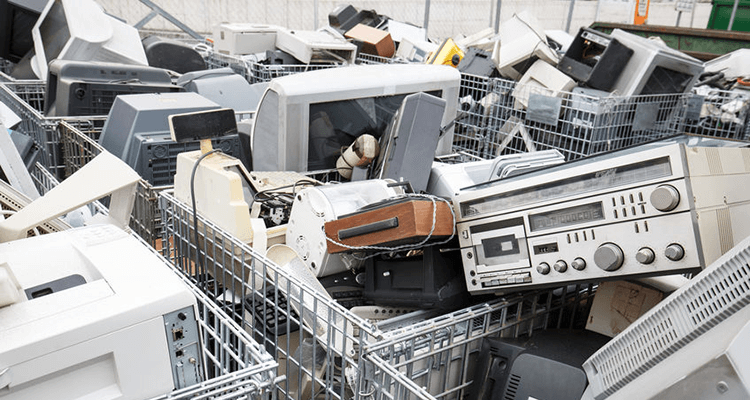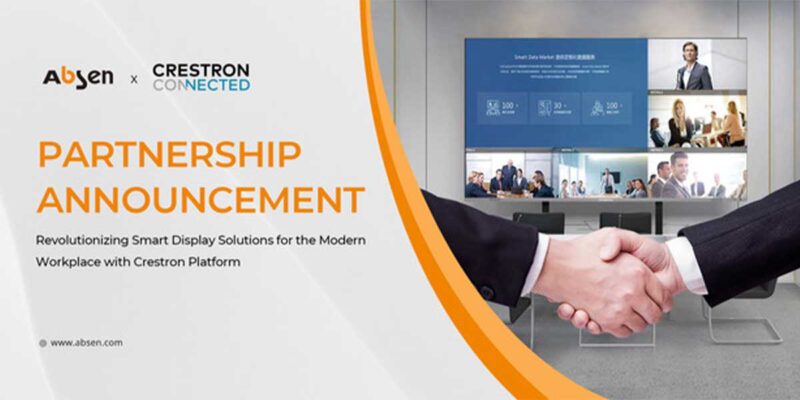AV Industry EOL: Planned Obsolescence (Part One)
 For all of the massive technology improvements and innovations within the AV industry, there is irony in the faster obsolescence of digital equipment compared to the analog age of AV, leaving customers vulnerable to unexpected end-of-life notifications of planned obsolescence at the discretion of the manufacturer and reducing the life-span of digital AV gear.
For all of the massive technology improvements and innovations within the AV industry, there is irony in the faster obsolescence of digital equipment compared to the analog age of AV, leaving customers vulnerable to unexpected end-of-life notifications of planned obsolescence at the discretion of the manufacturer and reducing the life-span of digital AV gear.
In 2005, the InfoComm tradeshow coined the phrase ‘the convergence of AV and IT’ to herald the confluence of AV signal flow over an IT network infrastructure. All these many years later, AV is a $186 billion (USD) industry, whereas the IT industry is nearly a $5 trillion (USD) space and yet the patterns for product life-spanning prevalent in the IT industry are nowhere to be found in the pro AV space. As Nic Milani, executive director of commercial product marketing at Crestron, put it, “compared to other industries, AV seems to be more of the wild, wild west when it comes to planned obsolescence. That being said, Crestron works with suppliers to support products through [their] warranties while actively communicating changes and replacements.”
Milani is in good company about the wild disparity of vendor support, product life-cycles and technology shifts. Glenn Bray of Barco and Clint Hoffman of Kramer also see an opportunity for the Pro AV industry to protect customer investments through software updates combined with a strong support model.
Hoffman, CEO at Kramer Electronics, shared his insight about the transition from analog to digital as an example of the cause for some technologies to become obsolete. “I think that when you look at the history of pro AV little black boxes, the obsolescence came only when the industry changed from signal type or one based technology to another, such as from analog to digital or from VGA to HDMI, as just two examples. Many times, the technologies being replaced have even lived on long after the transition because certain applications still require the older technology,” said Hoffman.
Clint Hoffman’s position is two-fold: One, that planned obsolescence isn’t an issue in the pro AV industry except when there is a major shift in the technology, and two, the pro AV industry opportunity is more about offering ‘as-a-service’ than about making products obsolete.
Glenn Bray, Barco VP & GM of mission-critical collaboration systems, says Barco has a similar viewpoint on planned product obsolescence. “Barco has a policy of serviceability rather than scheduled EOL (end of life). We aim to control the availability and serviceability for at least five years. If we can run a product line for many more years, we do that to the extent that it maintains current standards and customer demands.” Bray believes that vendors who publicly stand behind their products for a specified period of time offer greater value to the customer. “We like and value that sort of transparency. Since we look at a five-year minimum product lifecycle, it’s easy to calculate TCO for Barco. We promote, advertise and stand behind this kind of transparency.”
Service and warranties certainly play a key role in supporting a product over the expected lifetime, and each of the three companies represented in this article has more of a procedure than a policy for EOL. Kramer’s baseline warranty is seven years; Barco’s is five years, and Crestron’s is also five years, but the end of the manufacturer’s warranty doesn’t mean the product stops working once the warranty has expired. But that’s not always the case with technology, as we see below.
When Premature Obsolescence Is Unethical
During the shift from analog to digital technologies, products that relied on software or firmware updates for connectivity to a computer or the cloud have been at the greatest risk of a kind of planned obsolescence, which is seen as unethical by consumers: systematic and programmed obsolescence. The consumer electronics industry is rife with stories of vendors deliberately attempting to make a product obsolete by altering the system in such a way as to make it difficult to use or, worse, by deliberately disabling a product to prevent it from working, thus requiring the buyer to purchase a replacement technology.
The story of an engineering student figured out that his laser printer was prompting him to replace the toner cartridge much sooner than he anticipated. It turns out the toner cartridge had a small hole with a mirrored surface on the far side so that if an infrared beam reflected back, it told the printer that there is no toner between the hole and the mirror. When the engineering student applied dark tape over the hole, the printer couldn’t ‘see’ the reflected beam and the ‘low toner’ alert wouldn’t trigger. This student reported that his printer continued to print just fine after this small engineering solution. This anecdotal story reinforces the seemingly unethical forced obsolescence from the printer manufacturer as a ploy to sell more toner for their printers well before they supposedly ‘needed’ to be replaced.
Apple, Inc. has been accused of ‘bricking’ previous generation iPhones, iPads and the former iTouch and iPod products by making any of these older products unusable when updated to the latest iOS release. The implication is that while the technology and chipsets do, indeed, need to be faster to run updated versions of software to be highly effective, the longevity of the products is cut short by a company that simply does not want to support older products. And Apple is not alone in this, as the AV industry’s digital product lines often do the same.
However, not all obsolescence is planned as part of a profit motive, as ‘consumables’ have inherent limitations, such as batteries storing an electrical charge. Noted independent research analyst Dr. Beth Ann Fielder says it this way: “Without the continuous need to incorporate new information that improves products, devices and/or the procedures associated with them, innovation would be stifled,” argues Dr. Fielder. “Ultimately, product innovation requires adherence to product demand. Obsolescence is also necessary because new products require acquisition of new materials, new equipment and planning without which opportunity for new markets would be decreased,” she concludes.
Dr. Fielder’s argument is valid. In the pro AV industry, as with many other technology sectors, the availability of components and an inventory of replacement parts are finite limiters for the longevity of pro AV products. Glenn Bray says Barco plans to be able to support a product for at least five years. “We aim to have to our products last longer and we go to great lengths to ensure that our products are built on components with extended availability for ongoing support and service,” says Bray. Crestron’s Milani says, “At Crestron, we have an EOL procedure, not a policy, per se, and it’s driven by the supply chain. We plan for and announce EOL about six months ahead of time and introduce replacement products for our customers. The products will still work after, say, a five-year lifespan, but the hardware is EOL due to technology upgrades.”
The pro AV industry may not have all of the same obsolescence issues found in consumer electronics, but some pro AV gear — especially those designed to work with a Windows or Mac computer system — do, in fact, end up being obsolete simply because the manufacturer does not keep the firmware updated to work with the latest operating system from Microsoft or Apple.
Trade In or Trade Up To Soften the EOL
Manufacturers thath offer upgrades via a trade-in or trade-up program will buy back EOL technology or provide a discount for existing product line customer on the newest upgrades. “We have a product that is $1,200, but the price is reduced to $550 through our trade-in/trade-up program because we want to offer a helpful upgrade path,” says Milani.
Bray of Barco agrees that a trade-in program is helpful. “There are a couple of different areas where we can do trade-ups. We’re planning for that in our LED wall products that carry forward and have replaceability of various components, such as a single panel,” notes Bray. “For our more software-centric products, we have our care and support for updates and patches for ongoing support.”
Software-centric updates are important to extending the product usability for Crestron, as Milani sees backward compatibility as a key for adding value to the customer. “As we’ve evolved the DM-NVX line, we’ve provided backward-compatibility with the new feature sets. As we’ve updated software functionality we’ve provided it free of charge to customers. Even with our older digital technologies, like our Digital Media matrix switchers, we provide an upgrade to 4K, 4:4:4, at 60 frames per second, without the need to rip and replace infrastructure. Too often companies hide behind EOL, but not Crestron,” said Milani.
Clint Hoffman of Kramer talked about the upgrades made at the company’s own corporate headquarters from matrix switchers and HDBaseT infrastructure to their AV over IP infrastructure. “Our head executive VP of technology allocated three full days for himself and two of his teammates to upgrade our corporate headquarters, but because AV over IP is so easy, it only took a few hours.” Hoffman highlights that AV over IP and, specifically, software updates are the future for both extending product lifetimes and making easy updates for future-proofing the systems a high-value investment for clients. “Software-based AV solutions are the future, and there are two ways to provide software-based solutions: on-prem and in the Cloud,” notes Hoffman. In either solution, the longevity of the solution is increased because updates to the software or firmware help keep the solutions and the hardware compatible even as technology marches on.
Vendors and Customers Alike Benefit
The convergence of AV and IT may be finally happening in earnest, though the pro AV industry is not solely culpable for being slow to create a framework or patterns for setting product lifecycle expectations. Customers, too, share some of the responsibility. “It’s rare to see a customer handle EOL of their AV infrastructure the same as their IT purchases,” said Milani.
It’s true that customers should be more mindful of depreciation and amortization of AV gear, but the lack of a pattern to follow for creating sustainable, agreed-upon SLAs could certainly help mature the AV industry and provide easier ROI calculations for would-be buyers.
In the next article, I conclude rAVe’s look at planned obsolescence and the impact it has on sales, service contracts and support.




